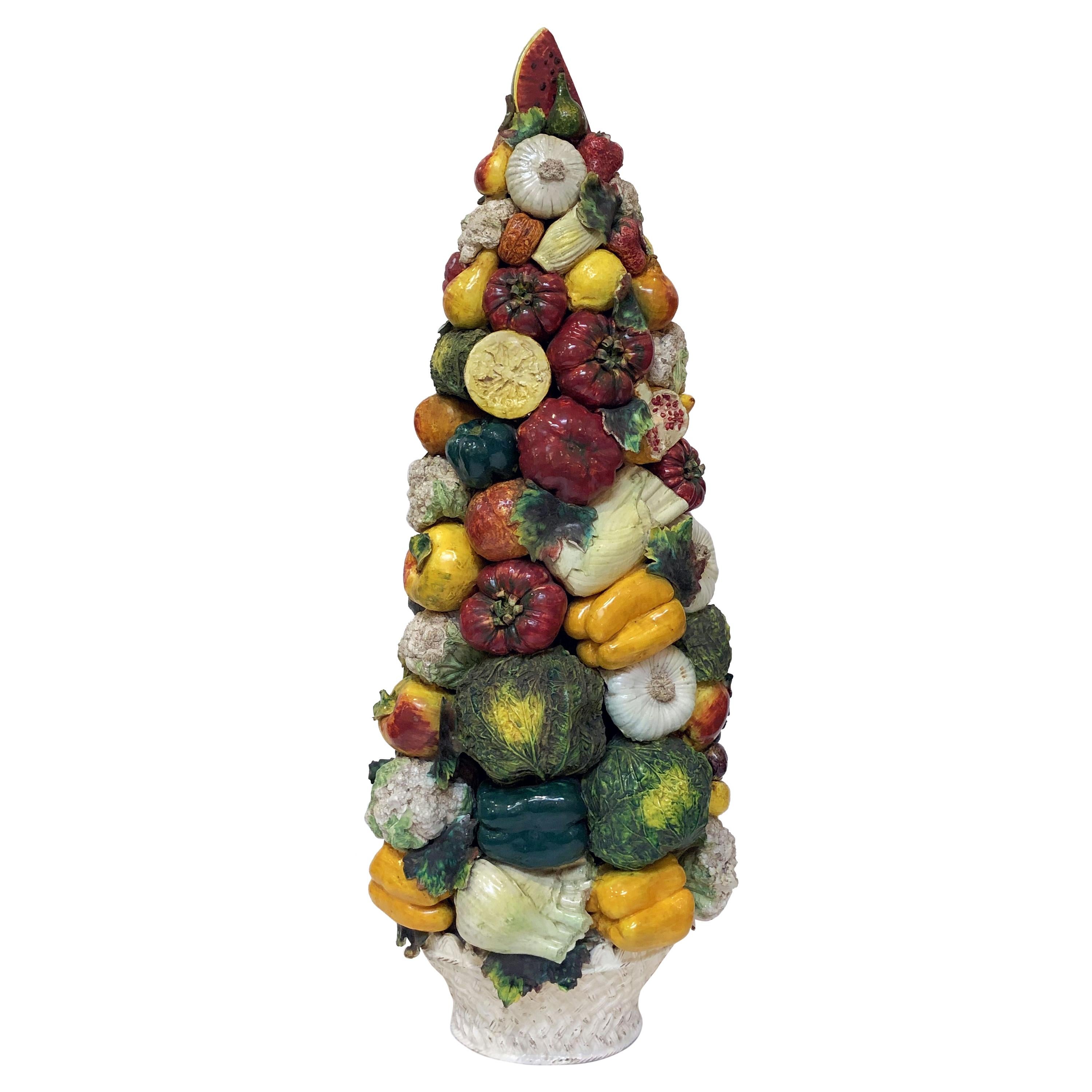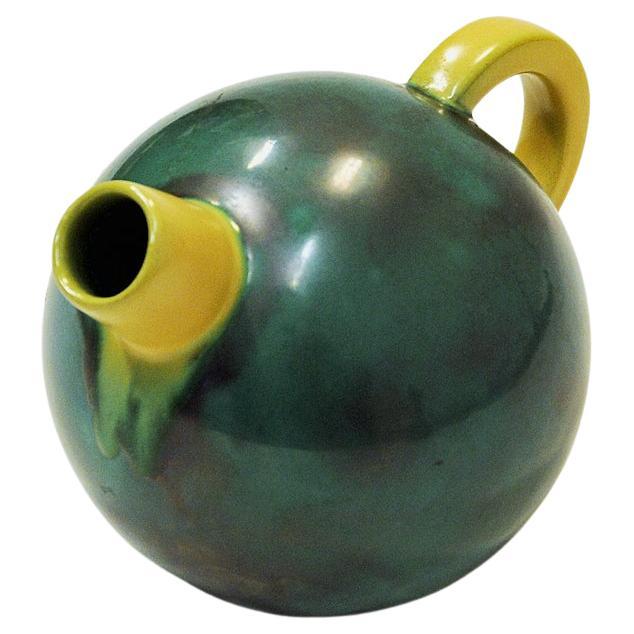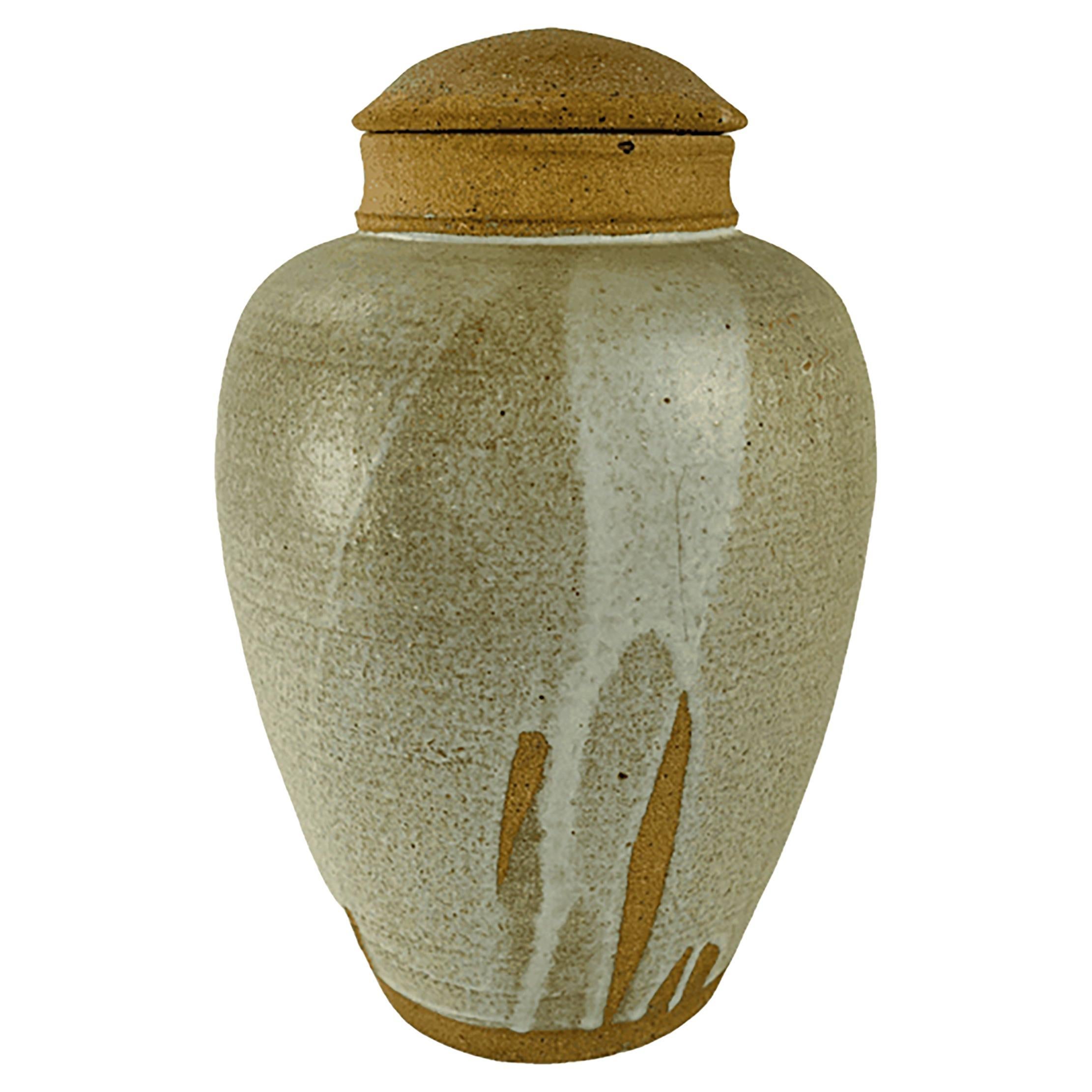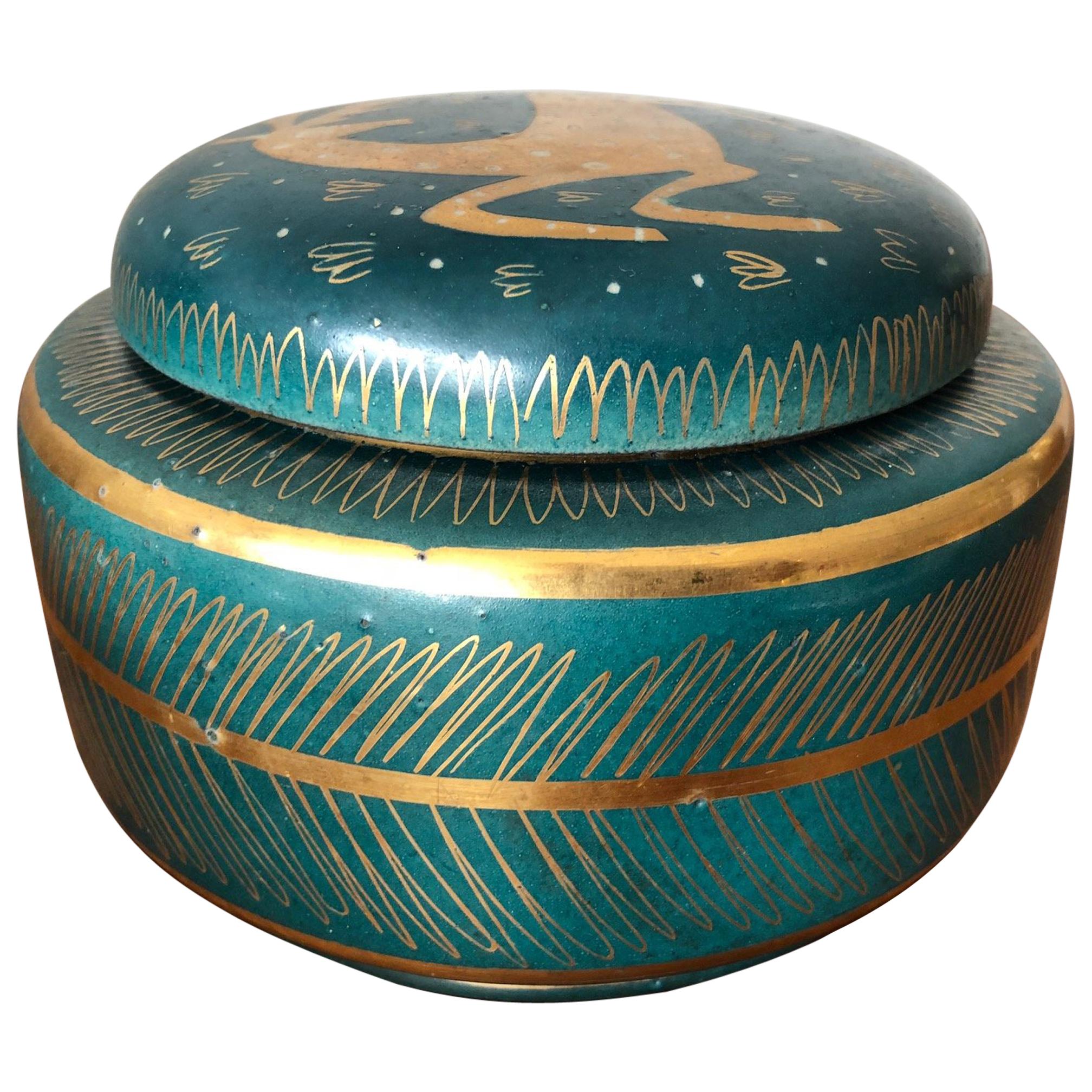Items Similar to 1930’s Belgium Ceramic Basket Casserole with Vegetable and Mushroom Lid
Want more images or videos?
Request additional images or videos from the seller
1 of 14
1930’s Belgium Ceramic Basket Casserole with Vegetable and Mushroom Lid
About the Item
A wonderful Casserole bowl or dish with integral lid, produced in Belgium, circa 1930. A ‘Tellurite’ model number -1125- lidded tureen with basket weave sides in rich, deep earth tones of green around the body with brown basket weave handles. This piece’s personality stems primarily from the mushroom and vegetables decoration on the lid, springing forth like it was spored yesterday.
In good condition with no chips or cracks.
General note: Shipping quotes as supplied by 1stdibs are only indicative. We will discuss and figure out the best possible shipment method (and rate) for every individual object.
- Dimensions:Height: 7.09 in (18 cm)Width: 15.16 in (38.5 cm)Depth: 9.26 in (23.5 cm)
- Materials and Techniques:
- Place of Origin:
- Period:
- Date of Manufacture:1930s
- Condition:Wear consistent with age and use.
- Seller Location:London, GB
- Reference Number:1stDibs: LU2868327684952
About the Seller
5.0
Gold Seller
These expertly vetted sellers are highly rated and consistently exceed customer expectations.
Established in 2015
1stDibs seller since 2017
170 sales on 1stDibs
Typical response time: <1 hour
- ShippingRetrieving quote...Ships From: Maldon, United Kingdom
- Return PolicyA return for this item may be initiated within 14 days of delivery.
More From This SellerView All
- Art Deco Gustavsberg Argenta Ceramic Plate with Silver Inlay by Wilhelm KågeBy Wilhelm Kage, GustavbergLocated in London, GBThis wonderful Art Deco plate or shallow bowl made in Sweden 1930s at Gustavsberg factory, was designed by the painter and ceramicist Wilhelm Kåge. The name Argenta comes from the La...Category
Vintage 1930s Swedish Art Deco Pottery
MaterialsSilver
- Boho Chic 19th Century Decorative Water Spout Handle Jug from Provencal FranceLocated in London, GBA very rare antique French glazed terracotta water spout handle jug in original condition .These jugs were used primarily in the South of France. Chips and imperfections help authent...Category
Antique 19th Century French French Provincial Pottery
MaterialsClay
- Scandinavian Modern Swedish Bowl by Carl Harry Stalhane and Maker RorstrandBy Rörstrand, Carl-Harry StålhaneLocated in London, GBSwedish ceramic artist Carl-Harry Stålhane (1920- 1990) played a major role in popularizing Swedish pottery during the 20th century, working for more than three decades at Rörstrand, one of the oldest ceramics manufacturers in Europe. During his long tenure at Rörstrand, Stålhane was responsible for small-batch studio pieces, mass-produced tableware , and all manner of decorative accessories . Born in 1920 in Mariestad, Sweden, Stålhane began working at Rörstrand in 1939 as a decorative painter, assisting Danish-Finnish ceramic artist, designer, and sculptor Gunnar Nylund (1904-1997). During this time, Stålhane decorated various ceramic pieces, most notably Nylund’s Flambé range (1939s), quickly establishing himself as a talented ceramic artist. Inspired by the desire for new products during the postwar economic boom, Stålhane went from being a talented decorator to an exceptional ceramic artist. In 1943, Stålhane caught the eye of Swedish artist Isaac Grünewald (1889-1946), who was visiting Rörstrand. Grünewald was so impressed with Stålhane’s work that he took him on as a student, and from 1943 to 1946, Stålhane studied art at Grünewald's Art School in Stockholm. Subsequently from 1947 until 1948, he studied sculpture at Académie Colarossi in Paris. During the 1950s, Stålhane’s work appeared in several solo exhibitions in Sweden, the United Kingdom, and the United States. His Blanca Tableware range (c. 1955) won numerous international prizes and was in high-demand. In 1958, Stålhane succeeded Nylund as Artistic Director and Chief Designer at Rörstrand. In 1960, Stålhane unveiled a new collection at Stockholm’s Galerie Blanche. Featuring dark stoneware pieces made from local clays, this collection represented a bold departure from the soft, restrained shapes of the 1950s. It has since been praised for its precient aesthetic that would influence the look of ceramics for more than a decade. From 1963 until 1971, Stålhane taught ceramics at the Art Industrial School in Gothenburg. For a short time, he also was the Design Director at the Swedish factory Upsala Ekeby, which in addition to porcelain, produced tile, brick, and glass. Stålhane eventually left Rörstrand in 1973 in order to establish his own ceramic company, Designhuset, in Lidköping, where he further experimented with local clays and minerals. Stålhane continued to work until his death in 1990. Today, Designhuset is a school for ceramists and model-makers. Over the course of his career, Stålhane created several public works for The Commerce Trust Company in Kansas City, Missouri, and for Volvo in Gothenburg, Sweden. His work is represented at several international museums, including Stockholm’s Nationalmuseum and New York’s MoMA. Rörstrand is the second oldest brand of ceramics in Europe and can be found in homes all across Sweden and Europe. Rörstrand’s long legacy includes some of Europe’s most iconic ceramics collections including Swedish Grace, Mon Amie, Ostindia, Filippa...Category
Vintage 1950s Swedish Scandinavian Modern Ceramics
MaterialsCeramic, Stoneware, Pottery
- Boho Chic Steam Bent Bamboo Side Table with Deep Red Ceramic Tiled Top 1890’sLocated in London, GBA late Victorian steam bent Bamboo side table with deep red ceramic tiles. This craftsman produced table with its simple, classic lines would also play ...Category
Antique 1890s British Bohemian Side Tables
MaterialsCeramic, Pottery, Bamboo
- Mid Century Modern Ceramic Jardinière by Bernard RookeBy Bernard RookeLocated in London, GBAn organic and Brutalist style Jardine which would work perfectly with trailing foliage. Bernard Rooke (born 1938) is a British artist and studio potter. Rooke has exhibited his "Brutalist" ceramics and painting both in the UK and abroad with work in many collections both public and private including the Victoria and Albert Museum, Cleveland Museum of Art, Nuffield Foundation, Röhsska Museum in Sweden and the Trondheim Kunstmuseum in Norway. Bernard Rooke attended Ipswich School of Art studying painting and lithography before going on to study at Goldsmiths College of Art. It was while studying here that he decided to take up pottery. Although unfamiliar with this craft and tradition, he found that working with clay provided new opportunities for freedom of interpretation and creativity. In 1960 Rooke set up his first pottery in Forest Hill in South London along with Alan Wallwork. It was a very small room with enough space for a small electric kiln. He was initially using mainly hand building, coiling, blocking and slabbing techniques. While researching ideas, he was supporting himself by part-time lecturing at London University, Goldsmiths College and St Mary's College. In addition, Rooke's membership of 'The Craftsman Potters' Association' enabled him to show his work in a shop in Carnaby Street in London. In 1967, both the need for a larger working space and becoming disillusioned with living in London spurred Rooke into moving out of the city and to an old mill building in Swilland in Suffolk. Rooke wanted to widen the range of work so as to become more commercial. With the birth of his son, Aaron, and much needed work to be done on the mill, it was important to be able to make a living. In 1968, the Grand Metropolitan Hotel commissioned Rooke to make 120 standard lamps, 120 table lamps as well as a 24 foot long ceramic mural and another 9 foot high, which incorporated interior lighting. The money from the commission helped to pay for much needed restoration work on the mill. By the 1970s, a gallery space was opened in the windmill and run by Susan Rooke, Bernard's wife, selling work to locals and tourists as well as to American airmen based nearby. The vision for Mill Gallery was beginning to develop and alongside this a reputation was building bringing in a good source of income. Sons Aaron and Felix were becoming more involved with the running of the pottery, giving Bernard more time to develop new ideas and designs and more time to continue with his painting. In 2004, the Rooke family decided not to sell to the public through the gallery anymore and close the pottery to concentrate more on painting and printmaking. In 2017 Bernard's lighting was featured in the Exhibition: “Glass, Light, Paint & Clay” at the Peterborough Museum and Art Gallery. The exhibition featured four artists: Bernard Rooke, John Maltby...Category
Vintage 1970s English Brutalist Planters and Jardinieres
MaterialsClay
- Set of Elm Tub Arts and Crafts Chairs with Panelled Backs and Carry HandlesLocated in London, GBA set of 1930’s Elm tub chairs made by G T Harris Ltd Cabinet makers of Northampton producing high quality arts and crafts furniture in the 1920’s to 1930’s Measures: Ht 85cm x wi...Category
Vintage 1930s English Arts and Crafts Chairs
MaterialsElm
You May Also Like
- Large Italian Majolica Ceramic Vegetable Tower or Topiary CenterpieceBy Este CeramicheLocated in Austin, TXA fine Majolica vegetable tower or topiary, attributable to the ceramic artisans of Este, Italy, featuring a naturalistic relief of vegetables upon...Category
Early 20th Century Italian Ceramics
MaterialsCeramic, Majolica, Pottery, Earthenware
- Vintage Ceramic Fish Set, English, 1930sLocated in St Annes, LancashireSuper art deco pottery fish set Comprising 4 plates and a serving dish By Shorter & Sons, Stoke On Trent. All in good condition The measurement re...Category
Vintage 1930s English Art Deco Ceramics
MaterialsPottery
- Large Original Art Deco Ceramic Vase by Keith Murray, C.1930By Keith MurrayLocated in St Annes, LancashireLovely shaped and good size cream / pale yellow ceramic vase made by Wedgwood. Designed by Keith Murray Makers marks and facsimile signature on base Tiny imperfection to the...Category
Vintage 1930s English Art Deco Ceramics
MaterialsPottery
- Green Glazed Vintage Ceramic Tea Pot Mod 323 by Upsala-Ekeby, 1930sBy Upsala EkebyLocated in Stockholm, SELovely matt green glazed colored tea pot by Upsala Ekeby in 1930s Sweden. Round delicate ball shaped design with a yellow half circled handle and spout. Good vintage condition and pe...Category
Vintage 1930s Swedish Scandinavian Modern Ceramics
MaterialsCeramic, Stoneware
- Mid 20th century hand turned clay lidded jar with a lava glazed finishLocated in Dallas, TXA mid 20th century hand turned clay lidded jar with a lava glazed finish. Signature marked on the bottom of the jar. This jar is of a slightly egg-like shape. Majority of the body ...Category
Mid-20th Century Ceramics
MaterialsClay
- Waylande Gregory Ceramic Jar with Sgraffito DecorationBy Waylande GregoryLocated in St.Petersburg, FLAn interesting ceramic lidded jar by Waylande Gregory with sgraffito decoration.Category
Vintage 1950s American Modern Ceramics
Recently Viewed
View AllMore Ways To Browse
Glasses From A General
Glass Vegetables
Glass Bowl With Lid
Vintage Glass Vegetables
Dish With Lid
Vintage Glass Bowl With Lid
Glass Dish With Lid
Vintage Green Stemmed Glasses
Vintage Green Stem Glasses
Silver Dish With Lid
Stem Dish
Basket Weave Glass
Glass Bowl In Silver Basket
Silver Vegetable Bowl
Green Mushroom
Green Tureen
Green Bowl With Handles
Vintage Glass Baskets With Handles





